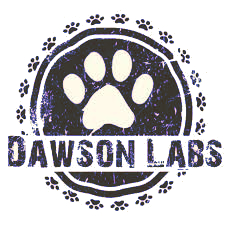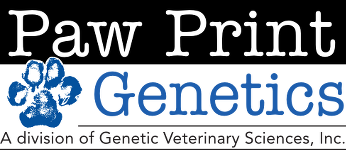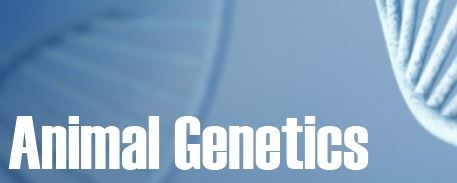Health Testing
This is what helps separate us from the rest.Testing sets us apart from other breeders!
Health Priority
- As you have probably read several times on this site, you may pay more for health tested puppy but it will pay off in the long run with a healthy dog that will be your best friend for the rest of its life. We want your puppy to have the best start in life after all he is going to be your best friend for the next ten to fifteen years!
- Our puppies are loved, held, snuggled, cuddled, socialized with kids, people and other dogs, exposed to different sights and sounds, textures, and experiences so they will be an amazing dog when they grow up!
- We welcome all our families to come to visit our dogs and their puppy before your puppy goes home so they can get to know your scent which makes a nice transition for your puppy
- We are careful to make sure you remove your shoes and wash your hands before you handle your puppy.
- If you have questions or concerns, need some advice or just want to chat I am here for you and will email you back and return your phone calls!
- When you purchase one of our pups you are family!
- We take our dogs/puppies back if you can no longer care for them. Please don’t let them go to a shelter.
What Is Disease Testing?!
Here at Dawson’s Labradors, we do a lot of testing on our Labradors to make sure we can give you the quality Labrador puppy you have been looking for. Your puppy deserves the best start in life he or she can have! We breed for health and calm temperaments and produce the most amazing puppies around!
We give a lifetime guarantee that your puppy will NEVER SUFFER from any of the following 7 diseases!
PRA stands for Progressive Retinal Atrophy.
It is a general term for the group of diseases causing degeneration of the retina, leading to loss of vision. The form of this disorder in Labradors is prcd (Progressive Rod-Cone Degeneration). This leads first to the loss of night vision and then to complete blindness of the dog. The typical onset for this is between age 3 and 5 years of age.
RD/OSD stands for Retinal Dysplasia-retinal folds (RD).
Retinal folds can cause blindness in a dog if not corrected by surgery. OSD (OculoSkeletal Dysplasia) is a serious inherited syndrome that causes a severe condition in which the dogs show a variety of skeletal malformations, including shortened limbs (dwarfism), and blindness at an early age; the blindness results from a generalized malformation of the retina that causes a partial or full retinal detachment and cataracts.
EIC stands for Exercise-Induced Collapse.
It is a devastating genetic disorder causing the affected dog to suffer from loss of muscle control following extreme exercise. This disorder is caused by a mutation in the Dyamin 1 gene. Because EIC is a recessive disorder, a dog must have two copies of the mutation in order for the disease to manifest itself. Typically an affected dog begins to show symptoms between 5 months and 3 years of age.
DM stands for Degenerative Myelopathy
is a progressive disease, meaning that dogs get slowly weaker and weaker over a four to six month period of time following diagnosis. Degenerative myelopathy usually affects the hind legs first, but muscle weakness can spread to the front legs as well. Dogs with degenerative myelopathy may begin to stumble frequently as they become progressively weaker due to nerve damage. Eventually, dogs with degenerative myelopathy will lose control of their bladder and bowels. As the disease moves into its final stages, symptoms of weakness, trembling and stumbling will begin to affect the front legs as well.
CNM stands for Centronuclear Myopathy
Puppies are born apparently normal, however, it quickly becomes evident that there is a problem. The puppy will often not gain weight due to decreased muscle tone in the esophagus. By age 2 to 5 months the disease has usually progressed to display the full range of symptoms, including a loss of muscle tone and control, an awkward gait and extreme exercise intolerance. This condition gets worse in cold conditions. There is no cure for CNM, although the dog can live a normal life span, their muscle tissue will never develop properly.
HNPK Hereditary Nasal Parakeratosis
is an inherited disease affecting the nose of Labrador Retrievers. Beginning around 6 to 12 months of age, affected dogs develop dry, rough, gray to brown crusts and rarely, painful cracks on the tip of the nose. In some cases, lesions are also present on the haired area around the nose. The noses of affected dogs are prone to superficial bacterial infections and often become depigmented over time. Affected dogs are otherwise healthy. Symptoms often wax and wane in severity over the dog’s life. Though manageable, this disorder requires continuous topical therapy to prevent the recurrence of excessive nasal crusting.
SD2 Skeletal Dysplasia
is an inherited Musculoskeletal disease affecting Labrador Retrievers. Affected dogs develop a mild form of “disproportionate dwarfism” consisting of short legs with normal body length and width. The leg bones are shorter, thicker, and slightly curved and the front legs are frequently more affected than rear legs. Joints and eyes are not typically affected by this disease. The height of affected dogs is variable, making a diagnosis based on physical characteristics alone challenging in some individuals. Mildly affected dogs from bloodlines known to produce large dogs may still fall within their breed standard for height. The causal Mutation shows Incomplete Penetrance meaning that not all dogs inheriting two copies (one from each parent) will display obvious physical characteristics of dwarfism





